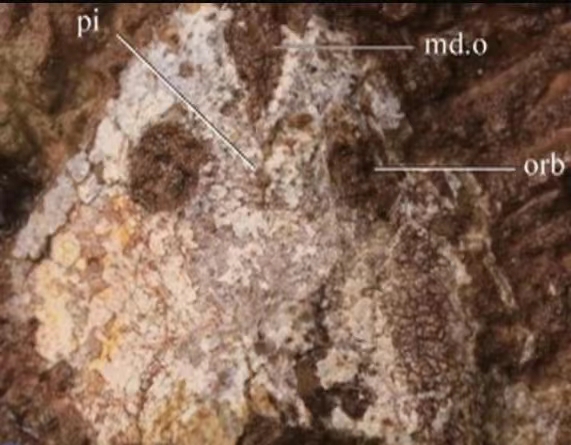Chinese scientists have discovered fossils of Jiangxialepis jiujiangensis, a species of Shuyuidae, in Jiujiang City, east China's Jiangxi Province.
Morphological and taxonomic studies show that the species is a "sister" of Jiangxialepis retrospina, discovered in Wuhan, central China's Hubei Province, before.
This finding indicates that the age of the fish-bearing strata in Wuhan is most likely earlier than previously assumed, which advances the age of Jiangxialepis retrospina by at least two million years.
The results have been published as a cover article in the latest issue of Acta Geologica Sinica, an international academic journal in this field.
According to Gai Zhikun, a researcher in the Key Laboratory of Vertebrate Evolution and Human Origins of the Chinese Academy of Sciences, the head of the galeaspid fish was encased in a single headshield, while the body consisted of numerous scales, and these are the only parts that can be preserved in the fossil record to this day.

Fossils of Jiangxialepis jiujiangensis
Fossils of Jiangxialepis jiujiangensis
This time, fifteen headshield specimens were found in Wuning, Jiangxi, but no complete preservation of the body was discovered.
The overall morphology of the headshield of Jiangxialepis jiujiangensis is similar to that of Jiangxialepis retrospina, with unclosed nostrils. The difference lies in the morphology of their median dorsal spines and inner cornual processes.
Researchers speculate that 438 million years ago, the Yangtze River basin was once a vast ocean – the Yangtze region, which had a narrow Jiujiang Channel. The discovery of the fossilized Jiangxialepis further supports this speculation.
Wuning may be the center of the evolution and spread of galeaspid. Since Wuhan and Wuning are less than 200 kilometers apart at the closest point in a straight line, it is likely that galeaspid completed their north-south migration across the Yangtze region through the Jiujiang Channel, and then migrated to east China's Anhui Province and Hubei Province, respectively.
Gai adds that stratigraphic studies show that the seafloor slope between the two places is extremely gentle, which provides convenient conditions and opportunities for the spread and exchange of galeaspid.
To a certain extent, systematic paleontological research is a "family tracing journey" for extinct organisms.
(Cover image is a screenshot)
(If you want to contribute and have specific expertise, please contact us at nature@cgtn.com.)
Source(s): Xinhua News Agency